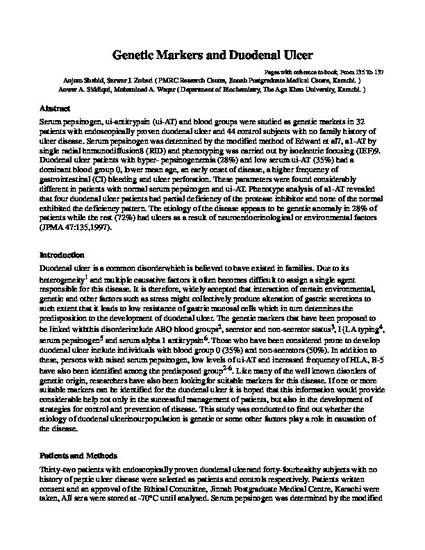
Serum pepsinogen, ui-antitrypsin (ui-AT) and blood groups were studied as genetic markets in 32 patients with endoscopically proven duodenal ulcer and 44 control subjects with no family history of ulcer disease. Serum pepsinogen was detennined by the modified method of Edward et al7, a1-AT by single radial hnmunodiffusion8 (RID) and phenotyping was carried out by isoelectric focusing (IEF)9. Duodenal ulcer patients with hyper- pepsinogenemia (28%) and low serum ui-AT (35%) had a dominant blood group 0, lower mean age, an early onset of disease, a higher frequency of gastrointestinal (CI) bleeding and ulcer perforation. These parameters were found considerably different in patients with normal serum pepsinogen and ui-AT. Phenotype analysis of a1-AT revealed that four duodenal ulcer patients had partial deficiency of the protease inhibitor and none of the normal exhibited the deficiency pattern. The etiology of the disease appears to be genetic anomaly in 28% of patients while the rest (72%) had ulcers as a result of neuroendocrinological or environmental factors (JPMA 47:135,1997).
Available at: http://works.bepress.com/anwar_siddiqui/26/
